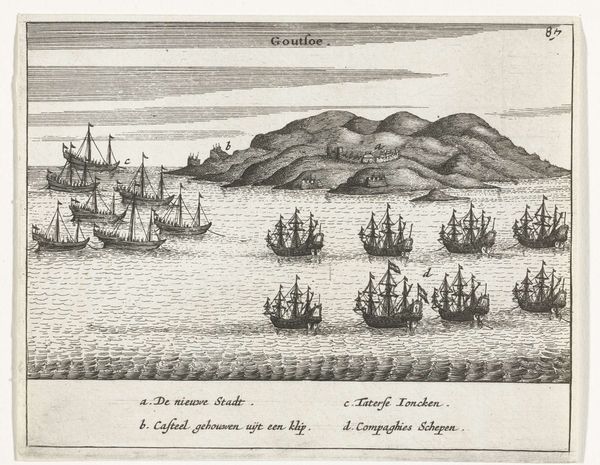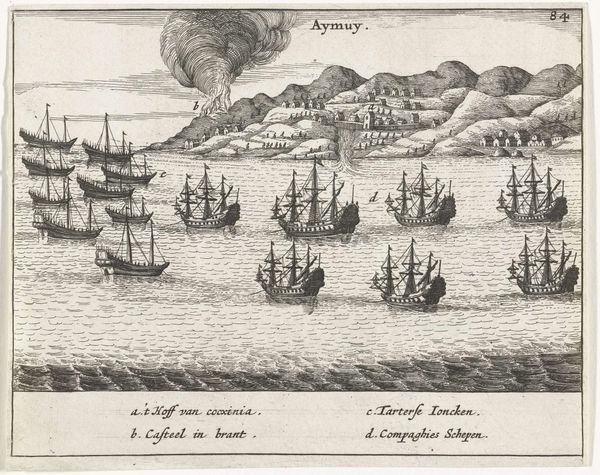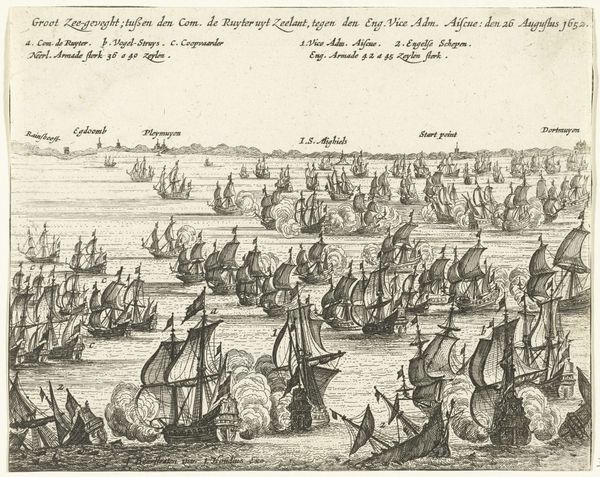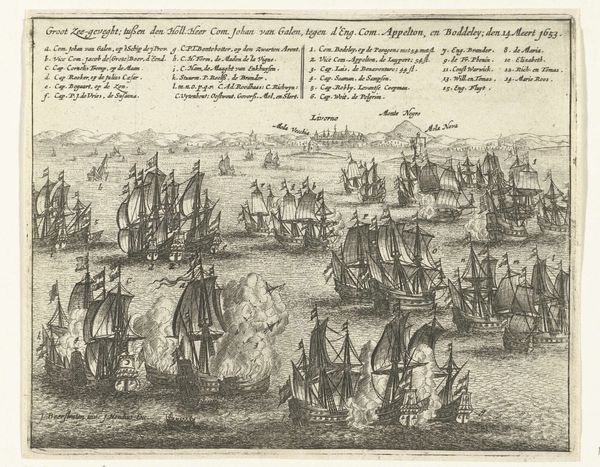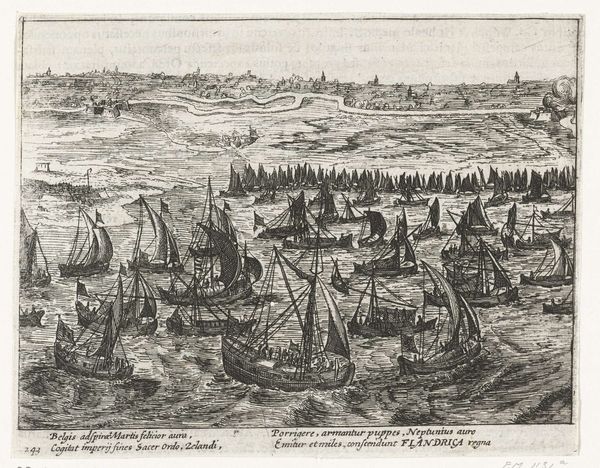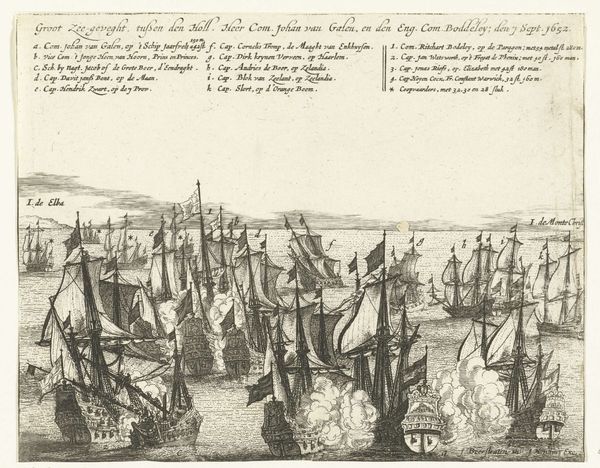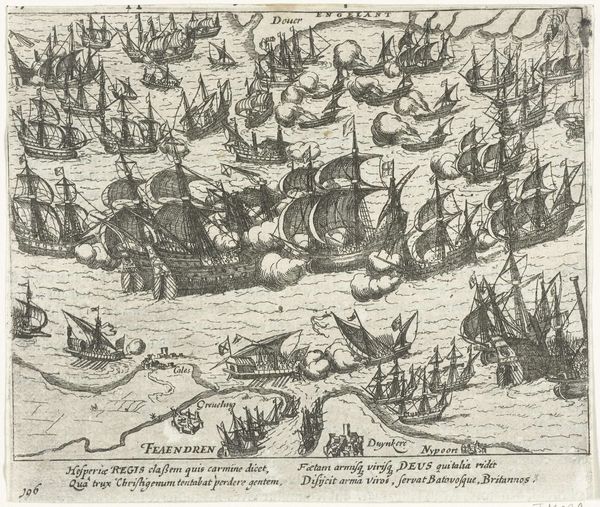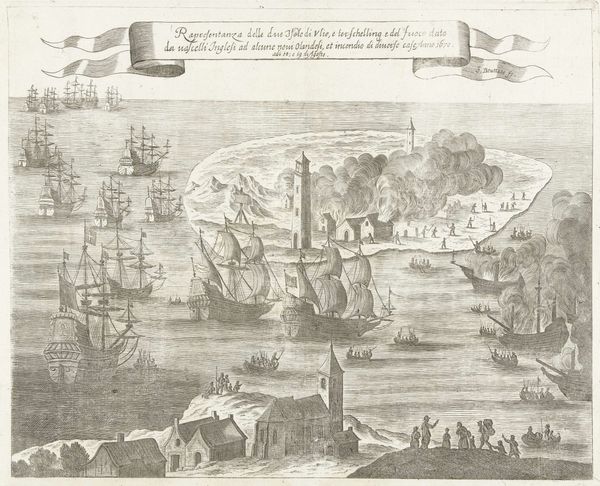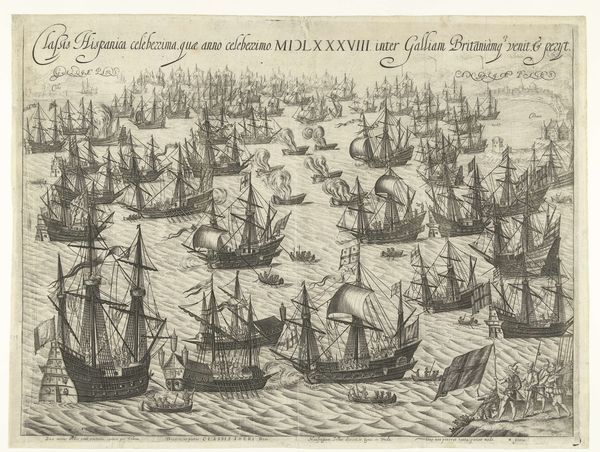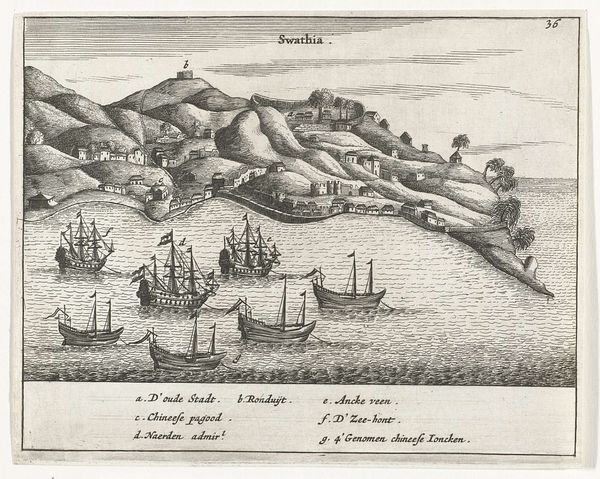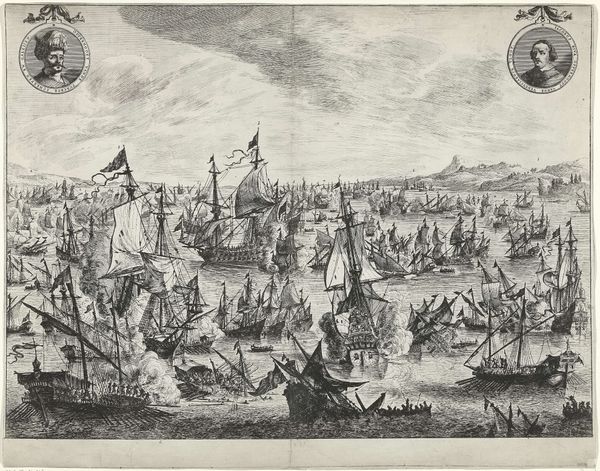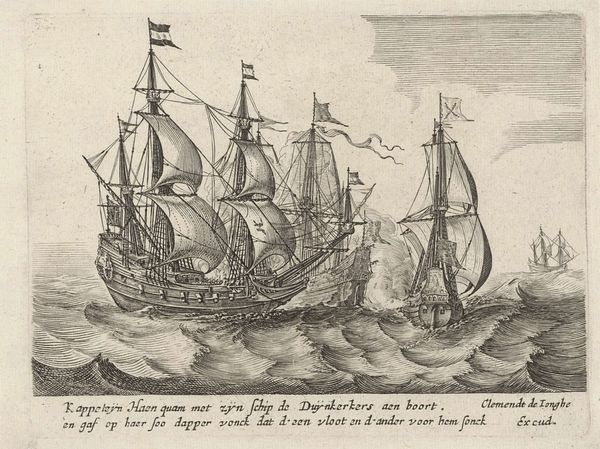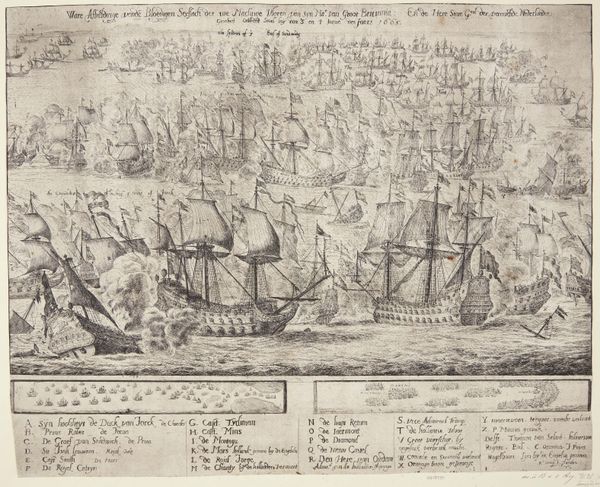
print, engraving
#
dutch-golden-age
# print
#
old engraving style
#
landscape
#
cityscape
#
engraving
Dimensions: height 133 mm, width 167 mm
Copyright: Rijks Museum: Open Domain
Curator: This image presents us with "Vloot bij Quemuy (China), 1662-1668," an engraving dating from approximately 1670. It's attributed to an anonymous artist. The detailed scene depicts a Dutch fleet off the coast of Quemoy, now Kinmen, in China. Editor: The immediate impression is one of starkness and control. The meticulous engraving, the crisp lines, and the defined separation between sea, ships, and land gives a clear structured view. There's an almost scientific quality to the rendering. Curator: Absolutely. This piece needs to be read within the context of Dutch maritime expansion and colonial encounters during the Golden Age. What narratives are omitted? This depiction reflects a specific worldview, highlighting European power. The fleet positioned aggressively offshore certainly presents a powerful statement. What interactions, negotiations or possible violence are absent? Editor: The medium—the engraved line—becomes the message. Look at how the density of the lines create volume and texture, the dark ships contrasting against the empty sky. The composition is balanced, almost symmetrical. The repeating motif of the Dutch flags snapping at the top of the masts serves to lead the eye. It creates a certain rhythm that underscores the Dutch presence and their navigational prowess. Curator: But whose narrative dominates this image? The artist—presumably Dutch—likely had specific intentions and socio-political reasons to emphasize certain aspects of the Dutch ships in contrast with the rendering of the Chinese landscape. What stories can we imagine beyond that colonial gaze? What can be read from silences, from the empty spaces and omissions? How might local Chinese people experience this same landscape? Editor: While recognizing the imperialist framework, there is still something intrinsically compelling about the geometric relationships and overall arrangement. The calculated placement of each vessel and their corresponding reflection upon the water suggests deliberation and careful arrangement. It’s worth also mentioning the technical virtuosity evident here. Curator: Considering that these types of maritime prints like “Vloot bij Quemuy” served a purpose— documenting encounters, projecting strength, and shaping perceptions. Today, with the aid of contemporary theory, this historical document provides insight into power dynamics, intercultural contact and their legacy. Editor: Precisely. Looking beyond the surface representation, this artwork is much more about line, texture and shape when examined for purely pictorial components. And so there is more to contemplate than history alone!
Comments
No comments
Be the first to comment and join the conversation on the ultimate creative platform.
